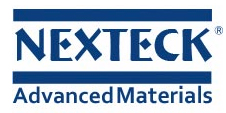Silicon is the chemical element that has the symbol Si and atomic number 14. A tetravalent metalloid, silicon is less reactive than its chemical analog carbon. As the eighth most common element in the universe by mass, silicon occasionally occurs as the pure free element in nature, but is more widely distributed in dusts, planetoids and planets as various forms of silicon dioxide (silica) or silicates. On Earth, silicon is the second most abundant element (after oxygen) in the crust,[1] making up 25.7% of the crust by mass.
Silicon has many industrial uses. Elemental silicon is the principal component of most semiconductor devices, most importantly integrated circuits or microchips. Silicon is widely used in semiconductors because it remains a semiconductor at higher temperatures than the semiconductor germanium and because its native oxide is easily grown in a furnace and forms a better semiconductor/dielectric interface than any other material.
In the form of silica and silicates, silicon forms useful glasses, cements, and ceramics. It is also a constituent of silicones, a class-name for various synthetic plastic substances made of silicon, oxygen, carbon and hydrogen, often confused with silicon itself.
Silicon is an essential element in biology, although only tiny traces of it appear to be required by animals. It is much more important to the metabolism of plants, particularly many grasses, and silicic acid (a type of silica) forms the basis of the striking array of protective shells of the microscopic diatoms.
| Symbol | Si | Density (20°C)/gcm3 | 2.336 (ß2.905 |
| Atomic number | 14 | Melting point / °C | 1420 |
| No. of naturally occurring isotopes | 3 | Boiling point / °C | -3280 |
| Atomic weight | 28.0855(+/-3) | ΔHfus/kJmol-1 | 50.6 |
| Electronic configuration | [Ne]3s23p2 | ΔHvap/kJmol-1 | 383 |
| rIV(covalent)/pm | 117.6 | ΔHf(monoatomic gas)/kJmol-1 | 454 |
| rIV (ionic, 6-coordinate)/pm | 40 | Ionization energy)/kJmol-1 I | 786.3 |
| Electrical resistivity (20°C)/μohm cm | ~48 | Ionization energy)/kJmol-1 II | 1576.5 |
| Pauling electronegativity | 1.8 | Ionization energy/kJmol-1 III | 3228.3 |
| Band gap Eg/kJmol-1 | 106.8 | Ionization energy/kJmol-1 IV |
| Temperature (oC) @Vap. Pressure | Techniques | Remarks | |||||
| 10-8Torr | 10-6Torr | 10-4Torr | Electron Beam | Crucible | Coil | Boat | |
| 992 | 1147 | 1337 | Fair | Tantalum & Vitreous Graphite | - | Tungsten & Tantalum | Alloys with Tungsten; use heavy Tungsten Boat. SiO produced above 4x 10-6 Torr. EB Best |
| Si | |||||
| Precision Alloys | |||||
| Alloy | Din Symbol | Electrical Resistivity at 20°C | Conductivity | Density | |
| μΩ/Cm | S/W | g/cm3 | |||
| NEXOHM® | NiCr20AlSi | 132 | 0.76 | 8 | |
| Thermo-electric Alloys | |||||
| Model No. | Symbol | Melting Point | Temp Tolerance | Temp Range | |
| °C | °C | ||||
| KP | Ni, Si, Fe, Cr | 1430 | ±2.2°C or ±0.75% (t90) | 0 to 1260 | Tolerance Standard |
| KN | Ni, Mn, Al, Si | 1400 | ±2.2°C or ±0.75% (t90) | 0 to 1260 | |
| NP | Ni, Si, Cr | 1394 | ±2.2°C or ±0.75% (t90) | 0 to 1260 | |
| NN | Ni, Si | 1341 | ±2.2°C or ±0.75% (t90) | 0 to 1260 | |
| EP | Ni, Si, Fe, Cr | 1430 | ±1.7°C or ±0.5% (t90) | 0 to 870 | |
| JP | Fe, Mn, Si, Al | 1496 | ±2.2°C or ±0.75% (t90) | 0 to 760 | |
| KPX | Ni, Si, Fe, Cr | 1430 | ±2.2°C | 0 to 200 | |
| KNX | Ni, Mn, Al, Si | 1400 | ±2.2°C | 0 to 200 | |
| NPX | Ni, Si, Cr | 1394 | ±2.2°C | 0 to 200 | |
| NNX | Ni, Si | 1341 | ±2.2°C | 0 to 200 | |
| EPX | Ni, Si, Fe, Cr | 1430 | ±1.7°C | 0 to 200 | |
| JPX | Fe, Mn, Si, Al | 1496 | ±2.2°C | 0 to 200 | |
| KPCA | Fe, Mn, Si, Al | 1496 | ±100μV(±2.5°C) | 0 to 150 | Tolerance Standard |
| Sputtering Targets | |||||
| Matierial | Symbol | Atomic Number | Thermal Conductivity | Theoretical Density | |
| W/m.K | g/cc | ||||
| Silicon_Si | Si | 14 | 150 | 2.32 | |
| Evaporation Materials | |||||
| Matierial | Symbol | Atomic Number | Thermal Conductivity | Theoretical Density | |
| W/m.K | g/cc | ||||
| Si ( pieces ) | Si | 14 | 150 | 2.32 | |
Below is the periodic table of chemical elements.The elements in red are the ones Nexteck's product contain. Click them, you will come to the details.

NEXTECK (CHINA) - SHENZHEN
Tower A1001, Galaxy Century, No 3069, CaiTian Rd, Futian District, Shenzhen, China
Zip Code: 518026
Tel: +86-755-8256-1631
Fax:+86-755-8256-1691
E-mail:[email protected]
PRODUCTION PLANT
Wenchuan Rd, Alley 5300/1, Baoshan District, Shanghai, China
Zip Code: 200942
Tel: +86-21-3638-0189
Fax: +86-21-3638-0109
E-mail: [email protected]